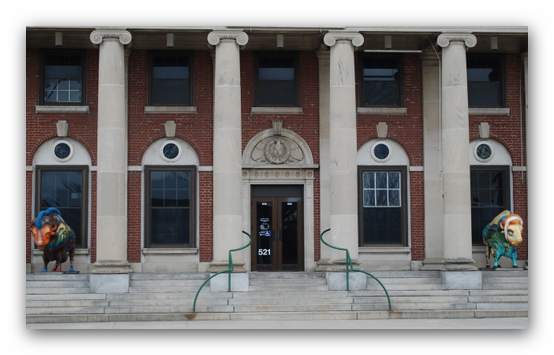Nov 4 2016 - Dec 4 2016
Moorhead, MN
Artist Biography
Sabrina Hornung was born in Jamestown, North Dakota in June 1984. She attended Minnesota State University Moorhead in pursuit of photography and currently resides in Fargo, North Dakota. Hornung’s roots play an integral role in her work—her pieces serve as an ode to the Dakota prairie. When not wandering the prairie with her camera, she serves as editor-in-chief at the High Plains Reader.
Hornung has participated in numerous group exhibitions including a three-woman exhibit entitled, “Prairie Trifecta” and the annual Midwestern Exhibition at the Rourke Art Museum. She has had solo exhibitions at Gallery 13, The Spirit Room, Plains Art Museum, and the Joachim Museum in Dickinson, North Dakota. Hornung’s solo exhibit “Trail Dust and Sentiment” was chosen as a traveling exhibition by the North Dakota Art Gallery Association (NDAGA). Her artwork is in the collections of Wurst Bier Hall in Fargo and the Oskar Hornung Haus and Museum in Stutensee, Germany.
Hornung has received awards for her mixed media work from the JFAA annual juried exhibitions at the Arts Center in Jamestown, North Dakota, Pekin Days Art Festival in Pekin, North Dakota, and The Badlands Art Association in Dickinson. She also received a grant award from the North Dakota Council for the Arts (NDCA) traditional arts and apprenticeship program to pursue wycinanki and scherenschnitte (the traditional arts of Polish and German papercutting) under Meridee Erickson Stowman.
Applying her experience papercutting through this apprenticeship, Hornung participated in the Art for Life program through the NDCA where she and Stowman engaged residents at Ave Maria Nursing Home in Jamestown producing a large scale wycinanki tree of life. Not only a papercutting project, the tree also served as an oral history-sharing experience.
Artist Statement
“Trail Dust and Sentiment” was a solo exhibition that made its debut at The Plains Art Museum in Fargo, North Dakota, May 2014. It is the culmination of two separate bodies of work featuring 36 pieces, 18 cyanotypes and 18 mixed-media transparencies. All are a celebration of the prairie and its heritage.
The mixed media transparencies are influenced by the folk tales and folk ways of the prairie, personal anecdotes, and a strong German backbone using photo imagery as well as vintage ephemera ranging from Victorian greeting card imagery to vintage paper dolls and their outfits that often personify the flora and fauna of the prairie.
Both bodies of work featured in “Trail Dust and Sentiment” are quite different but the unifying factor is not only the subject matter, but also the use of alternative photo processes. I have always been attracted to alternative processes. Once I no longer had access to a dark room at MSUM (or any other place for that matter), I sought out yet another nontraditional way to express myself with photography.
“Sod breakin’ and reclamation” is an offshoot of “Trail dust and sentiment”. It includes the mixed media pieces and cyanotypes as well as the scherrenschnitte pieces she made while apprenticing under Erickson Stowman.
Scherenschnitte is a German folk art that is the art of cut paper. Much of the subject matter holds true to its traditional roots, though much of Hornung’s work incorporates imagery of the American West as well as folk tales and traditions that can be found on the plains of the midwest. With the incorporation of the cut paper pieces amongst the collage oriented mixed media pieces, and the cyanotypes the exhibit seems to come full circle. While each discipline is distinctly different the viewer can see how each medium informs the other.
The mixed media photo transparencies utilize that photography background on top of which I build a collage. I then have a transparency made, which is painted with acrylic and spray paint.
The second medium used is cyanotypes. Cyanotypes are a Victorian photo process that are essentially what blueprints are made of. I used watercolor paper as a support for these pieces and then embellished a few of the images with watercolor pencil. When this body of work was created I had great hopes that it would travel and generate conversation between multiple generations.
In 2010 I went on a statewide mission to document areas of interest on the roads less traveled. I found myself documenting examples of folk art, ghost towns, pioneer cemeteries, and events that preserve pioneer ways of life, such as threshing bees and regional museums. I slowly started to realize that the North Dakota I grew up with is rapidly changing and therefore felt that it was in need of a roadside historian to share its tales (and learn many more) through an antiquated medium.
Credit: Exhibition overview from museum website.
Exhibition Venues & Dates
Nov 4 2016 - Dec 4 2016
Moorhead, MN
